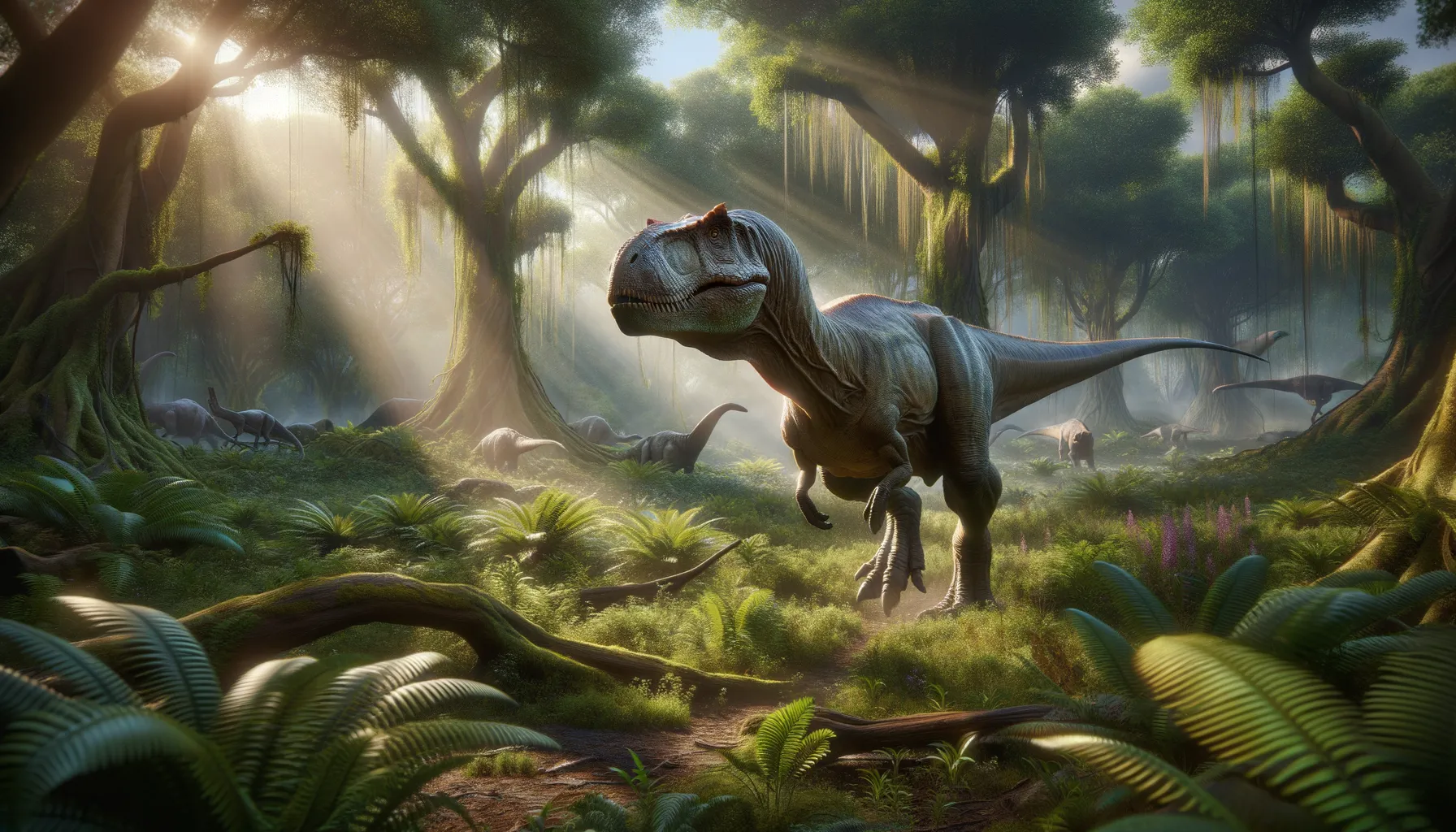
Indosaurus
Formidable predator of the ancient lands.
Period
Cretaceous
Length
Roughly 7 meters long (around 23 feet).
Height
Approximately 2.5 meters tall (about 8 feet).
Weight
Around 700 kg (approx 1,500 lbs).
A mid-sized carnivorous dinosaur, Indosaurus roamed the landscapes of ancient India during the Late Cretaceous period. It was part of the abelisaurid group, known for their short snouts and robust builds. Indosaurus thrived in environments rich with diverse vegetation and a variety of other dinosaur species. Notable for its formidable hunting skills, it occupied a significant predatory niche and its fossils offer valuable insights into the ecosystem of its time.
Diet
Indosaurus was a carnivore, preying on smaller dinosaurs and possibly carrion. It used its sharp teeth and strong jaws to catch prey, efficiently slicing through flesh.
Hunting
Its hunting strategy likely involved ambush techniques, hiding in dense vegetation before swiftly attacking. The dinosaur relied on its agility and strength to overpower its targets.
Environmental challenges
Indosaurus faced environmental changes in climate and vegetation during the Cretaceous period. Seasonal climatic shifts could pose challenges, pushing it to adapt its hunting patterns. Competition with other predators required strategic planning for survival, while environmental changes sometimes led to scarcity of prey, testing its adaptability.
Speed
Likely moderate, agile for a predator.
Lifespan
Estimated to be around 20-30 years.
First discovery
Found in India, first described in 1933.
Fun Facts
- Indosaurus was a carnivorous dinosaur that lived approximately 70 million years ago during the late Cretaceous period.
- This dinosaur was discovered in the region that is now modern-day India, which is why it carries the name 'Indosaurus', meaning 'Indian lizard'.
- Indosaurus is believed to have been a theropod, which means it walked on two legs and was likely a fast and agile predator.
- Although it was a meat-eater, scientists aren't entirely sure what Indosaurus preferred as prey because complete skeletons are hard to find.
- The skull of Indosaurus had distinct ridges, suggesting it might have had interesting facial features that could have been used for display or recognition among its kind.
- Fossil evidence of Indosaurus was first found in the early 20th century, giving paleontologists a better understanding of the diverse dinosaur population in ancient India.
- While many details about Indosaurus remain a mystery, it contributes to our knowledge of dinosaur evolution in the Gondwana landmass.
Growth and Development
Starting life as a small hatchling, Indosaurus grew rapidly to reach adult size. Juveniles might have faced predation risks, necessitating protective adaptations or strategies. Its development phase likely included learning essential hunting and survival skills from adult dinosaurs.
Habitat
Indosaurus inhabited floodplains and forested regions with abundant prey. These areas provided the cover necessary for its ambush hunting style. The habitat featured a mixture of herbivorous dinosaurs and smaller carnivores.
Interaction with other species
As a top predator, Indosaurus had fewer threats from other species but needed to compete with other large carnivores. It might have exhibited territorial behaviors to establish dominance. Its interactions also included opportunistic scavenging from other predators’ kills.
Natural lifespan
It lived up to 20-30 years in natural conditions.
Reproduction
Indosaurus reproduced by laying eggs in nests likely constructed in concealed areas. Parental behavior is uncertain, but some level of guarding or care might have been involved to protect the offspring from predators.
Social behaviour
While primarily solitary, Indosaurus may have formed temporary groups during the breeding season. Any social interaction was likely driven by mating opportunities or hunting collaboration.
Fossil locations
The fossils of Indosaurus have been predominantly found in the Province of Jabalpur, India. These discoveries provide crucial information about the dinosaur fauna of the region during the Late Cretaceous period. The site has also provided fossils from other significant dinosaur groups, painting a diverse prehistoric ecosystem.
